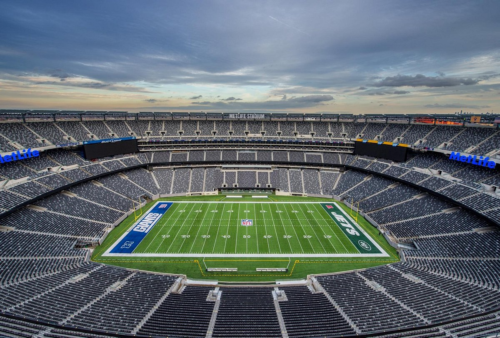For more info on Public Betting and common pitfalls of the ubiquitous “fading the public” strategy – check out my first article on it here
With the explosion of sports betting content after legalization in the past few years, it’s hard to read articles or listen to betting content without “bet splits” making an appearance. We’re going to go into the hard truth about how you can actually use these betting percentages. Spoiler alert – the answer is usually: don’t.
If you blindly faded the public through 5 weeks of this NFL season, you got absolutely destroyed. The 8 most-bet NFL teams through week 5 went 26-14 ATS. Let’s go into why that happened and how to save your bankroll for the rest of the year.
When Public Betting Percentages Shine
Before we go too deep into caution, however, let’s look at where these splits can be helpful. Because public betting percentages can be valuable, but usually only in specific circumstances. They are not a cheat code to sports betting, rather a single tool in a vast arsenal that requires careful application. Here are the only two times I would consider taking a long look at bet splits:
- High-Profile Games: In matchups that attract a lot of casual bettor attention, such as prime-time games or playoff battles, public betting percentages can sometimes reveal which side is overhyped. If there’s a notable discrepancy between the number of bets and the total money wagered, it can signal that the smaller number of large bets (presumably from sharp bettors) are on the opposite side. The mistake that most casual bettors make is applying this logic to a Jags-Texans Sunday 1pm NFL game. Here’s my rule of thumb: if the game isn’t in a stand-alone spot (primetime, super bowl, national championship), it’s not going to be enough of a heavily-bet game for the splits to be meaningful.
- Extreme Percentages: Occasionally, you’ll see a game where 80% or more of the public is on one side. While not foolproof, these extreme cases can sometimes suggest a contrarian bet on the other side may hold value. Bookmakers can adjust lines in response to lopsided action, not necessarily the probability of an outcome. However, a bettor should still proceed cautiously in very low-profile games. A Saturday 2pm Sun Belt college game may only have 100 tracked bets on it from various services. In this case, extreme percentages will not be statistically significant. My rule of thumb here is to make sure the game has at least an average volume of bets compared to other games at that same time.
When They Mislead
Except in those two cases above, most times public betting percentages are more a trap than a treasure.
- They Ignore any Context: The public lacks nuance in their betting strategy, and this can lead to significant noise in the bet splits. They don’t consider injuries, tactical matchups, weather, or any number of factors critical to the outcome of a game. As the season goes on, the public splits are effectively glorified coin flips. The public will often back a team mostly at random. Obviously, there is no value to be gained from fading a random coin flip.
- You Don’t Know What Number They Got: There is no service currently on the market (unless you actually work inside a sports book) that will tell you what number most of the bets for a current game were on. Because of injuries and other factors, point spreads can move significantly during a week. If the public bets a team at -5 and the spread moves to -3, you’re not “fading the public” by betting +3. If the game lands 4, the public and you both lose!
How to Navigate the Numbers
With this understanding, how should one navigate public betting percentages?
- Use Them as a Guide, Not Gospel: These percentages should inform your betting, not dictate it. They are a piece of the puzzle, not the puzzle itself. Use them to gauge sentiment, but always corroborate with thorough research and analysis.
- Seek Out Discrepancies: Look for mismatches between the number of bets and total money wagered, as these can sometimes point to where the ‘smart’ money lies. Again, we’re trying to do this in high-profile, stand-alone matchups. Also, this doesn’t mean the smart money won’t lose, but it can indicate a less popular bet with potential value.
- Keep a Balanced Perspective: Remember that public betting percentages are a reflection of popularity, not probability. They tell you what people think will happen, not what will happen. And most people don’t know very much, so their opinion on what happens is not so much “likely to be wrong” as it is “likely to be random.”
Conclusion: Navigating Public Sentiment with Caution
Four years ago, I was much more of a “fade the public” bettor in the NFL. One day I realized something that I had initially thought was just variance but turned out to be something that totally changed my strategy and mindset. I was getting killed in the 1pm games, and then making it back on Sunday night. I thought this was just randomness, but I decided to dive deeper. This deep dive pointed me in the direction of my “high-profile game” rule, which has completely transformed my strategy. Fading the public in 1pm games simply doesn’t matter, there isn’t enough national coverage or narrative around these games for the public to form any opinion that can be taken advantage of.
I cannot overstate the last point enough. The public isn’t usually “wrong,” they are just usually “random” when it comes to 1pm NFL or noon college games.
If I told you that I had a monkey picking teams, and the monkey pointed to one team, would you “fade” and pick the other team because the monkey is not as smart as you are?
Obviously not, that wouldn’t make any sense. The monkey is not any more likely to pick the winning or losing team. The monkey is picking completely at random. That’s what the public is doing during the 1pm slate – they’re the monkey. There is no profit to be gained from “fading” the monkey.
Hopefully you learned something here that you can apply to your betting! This is part 2 of a longer “fading the public” series. We’ll have a third part soon – In the meantime, check out part 1 here
FAQ
How do you find out who the public is betting on?
I typically use the action network to look at bet splits. Also, some sportsbooks will have their bet percentages displayed to you. Note that sometimes these two won’t match up, especially in lightly-bet games.
When are public bets predictive?
The public will heavily bet high-profile games, like the Super Bowl and Monday Night Football. Worth noting is that the public usually doesn’t bet until game day, so any bet splits you see on a Thursday or a Friday are likely to change substantially closer to game time.











